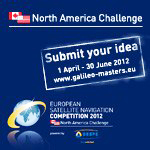 One of 12 magnetograms recorded at Greenwich Observatory during the Great Geomagnetic Storm of 1859
One of 12 magnetograms recorded at Greenwich Observatory during the Great Geomagnetic Storm of 1859 1996 soccer game in the Midwest, (Rick Dikeman image)
1996 soccer game in the Midwest, (Rick Dikeman image)
 Nouméa ground station after the flood
Nouméa ground station after the flood A pencil and a coffee cup show the size of NASA’s teeny tiny PhoneSat
A pencil and a coffee cup show the size of NASA’s teeny tiny PhoneSat Bonus Hotspot: Naro Tartaruga AUV
Bonus Hotspot: Naro Tartaruga AUV
 Pacific lamprey spawning (photo by Jeremy Monroe, Fresh Waters Illustrated)
Pacific lamprey spawning (photo by Jeremy Monroe, Fresh Waters Illustrated) “Return of the Bucentaurn to the Molo on Ascension Day”, by (Giovanni Antonio Canal) Canaletto
“Return of the Bucentaurn to the Molo on Ascension Day”, by (Giovanni Antonio Canal) Canaletto The U.S. Naval Observatory Alternate Master Clock at 2nd Space Operations Squadron, Schriever AFB in Colorado. This photo was taken in January, 2006 during the addition of a leap second. The USNO master clocks control GPS timing. They are accurate to within one second every 20 million years (Satellites are so picky! Humans, on the other hand, just want to know if we’re too late for lunch) USAF photo by A1C Jason Ridder.
The U.S. Naval Observatory Alternate Master Clock at 2nd Space Operations Squadron, Schriever AFB in Colorado. This photo was taken in January, 2006 during the addition of a leap second. The USNO master clocks control GPS timing. They are accurate to within one second every 20 million years (Satellites are so picky! Humans, on the other hand, just want to know if we’re too late for lunch) USAF photo by A1C Jason Ridder.  Detail of Compass/ BeiDou2 system diagram
Detail of Compass/ BeiDou2 system diagram Hotspot 6: Beluga A300 600ST
Hotspot 6: Beluga A300 600ST

1. SMART BALL
Portland, Oregon USA
√ Adidas has designed every official World Cup ball since 1970. And that’s not all! The Adidas Innovation Team in Portland, Oregon, spent 4 years on a smart soccer ball with a “six-axis MEMS accelerometer sensor package” that can detect speed, spin, strike and flight path data and whip it on over to the special GPS app on your iPhone. The app interprets the data for you, coaches you, and keeps a video to show your friends. On sale now for only $299.
1. SMART BALL
Portland, Oregon USA
√ Adidas has designed every official World Cup ball since 1970. And that’s not all! The Adidas Innovation Team in Portland, Oregon, spent 4 years on a smart soccer ball with a “six-axis MEMS accelerometer sensor package” that can detect speed, spin, strike and flight path data and whip it on over to the special GPS app on your iPhone. The app interprets the data for you, coaches you, and keeps a video to show your friends. On sale now for only $299.
- (May 27, 2014) Adidas launches smart ball
2. ROOM FOR MORE
Cape Canaveral, Guiana Space Center
√ In less than a decade, we’ll have 100+ GNSS satellites in orbit. The U.S. and the E.U. are doing their part with launches this summer. The seventh GPSII-F will go up from Cape Canaveral on July 31/August 1 and two Galileo FOC satellites will head for the skies from Kourou around August 22.
- GPS.gov Space Segment page and launch countdown
- European Space Agency News
3. LONGITUDE PRIZE II
Greenwich, United Kingdom
√ The Longitude Prize of 1714 was won in bits and pieces by John Harrison for his marine chronometer. Some 300 years later, the British Government decided to encourage solutions to 21st century problems using a renewed version of that drawn-out competition. This one is worth £10 million (US$17 million). The royal museums at Greenwich joined in with a new exhibit: Ships, Clocks & Stars, running through January 4, 2015, and featuring the original Longitude Act and Harrison’s five clocks.
4. HAPPY ROUTES
Barcelona, Spain and Torino, Italy
√ Yahoo Labs in Spain and researchers in Turin came up with a mapping
algorithm to find the most “emotionally pleasant” ways to get around.
They used 3.7 million locations in London from Geograph and Street View,
then crowdsourced the response to each location using UrbanGems.org.
They plotted the most beautiful, quiet or happy routes and compared them
to the shortest. Guess what? It takes only 12% more time, on average,
to walk in beauty.
- (July 3, 2014) arXiv.org: The Shortest Path to Happiness
5. NATIONAL SECURITY
Beijing and Cupertino, California
√ China’s state broadcaster CCTV called the iPhone OS7 a national
security concern on July 11. They interviewed Ma Ding of People’s Public
Security University in Beijing, who said the “frequent location”
function could provide Apple with confidential information about the
economy “or even state secrets.” The expensive iphone is popular among
high-level bureaucrats and business leaders. Apple said they have never
allowed access to their servers nor created a backdoor for any agency of
any government and “we never will.”
- (July 12, 2014) China Post: iPhone Called National Security Concern in CCTV Interview
- Ships, Clocks and Stars exhibit
- Apple location privacy statement





